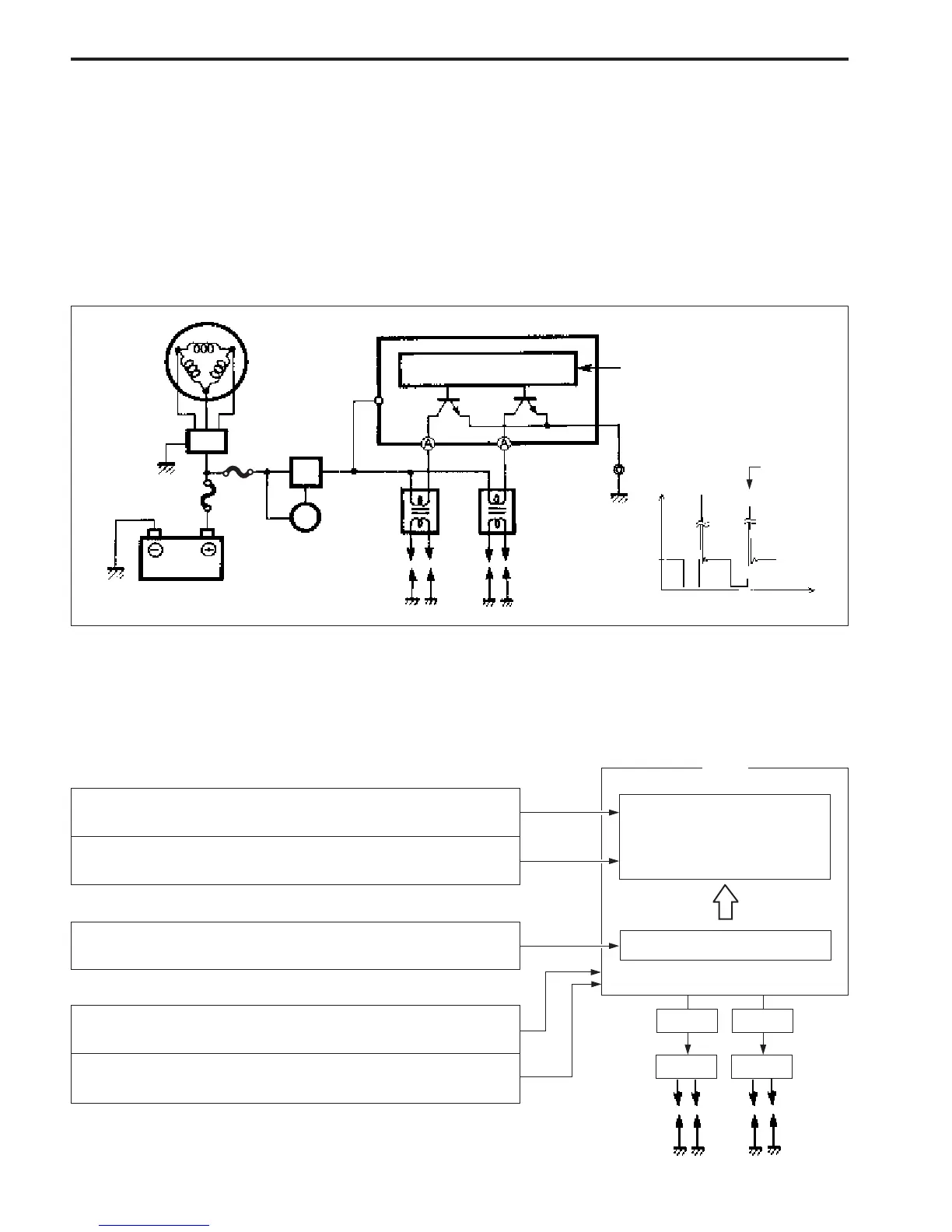3-12 ENGINE CONTROL SYSTEM
IGNITION CONTROL SYSTEM
OUTLINE
Sensors at specific points on the engine monitor current engine conditions and send signals to the ECM.
Based on these signals, the ECM determines the optimum ignition timing and releases voltage to the ignition
coils.
IGNITION SYSTEM
The ignition system used by the DF90/DF115 is a fully transistorized, electronic microcomputer timing ad-
vanced type.
This system is totally battery powered, with the ECM controlling all ignition timing functions.
The ignition system is composed of the ignition coil, spark plug and components for system control (ECM,
sensor, switch, etc.).
When the ignition switch is “ON”, battery voltage (12V) is applied to the circuit as shown in the illustration.
At the calculated time of ignition, the transistor in the ECM turns “OFF”, breaking the ground circuit.
In this way, a mutual induction high voltage occurs in the ignition coil secondary side and spark is generated.
Basic sensors
Compensating sensors
Others
Spark plug
MAP sensor :
Informs ECM of intake manifold pressure.
CKP sensor :
Informs ECM of engine speed and crankshaft angle.
Cylinder temperature sensor :
Informs ECM of cylinder temperature.
CTP switch :
Informs ECM of throttle position (open / closed).
Ignition switch :
Informs ECM of “START” signal.
Ignition timing is determined by
a digital map designed in rela-
tion to intake manifold pres-
sure and engine speed.
ECM
Signal
Ign.coil
Signal
Ign.coil
(Voltage)
Spark timing
12V
A terminal voltage
(Time)
Ignition timing compensation
ECM
CPU
Sensor / switch
signal input
Ignition coil
Spark plug
Ignition
switch
Battery
60A fuse
Rectifier &
regulator
Battery
charge
coil
ECM
main
relay
30A fuse

